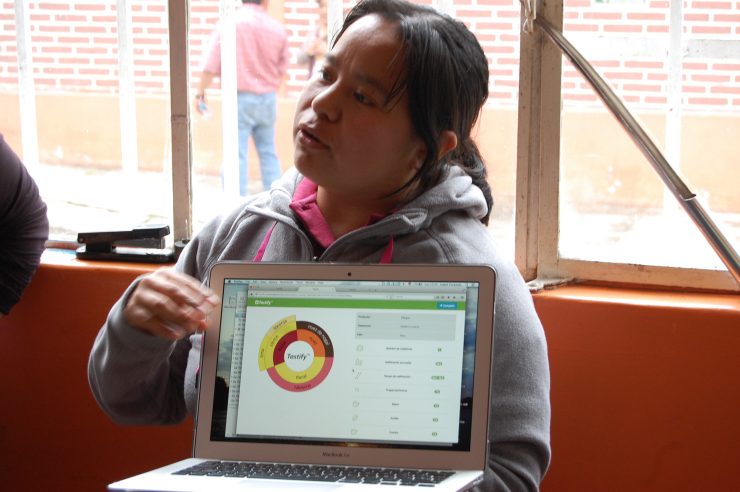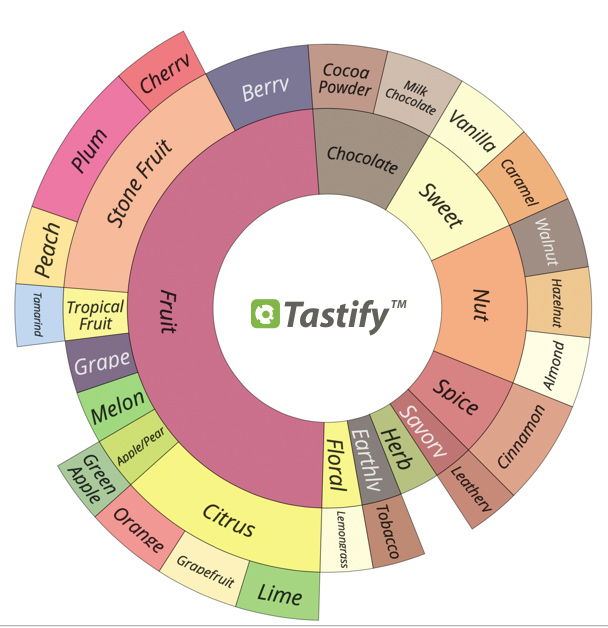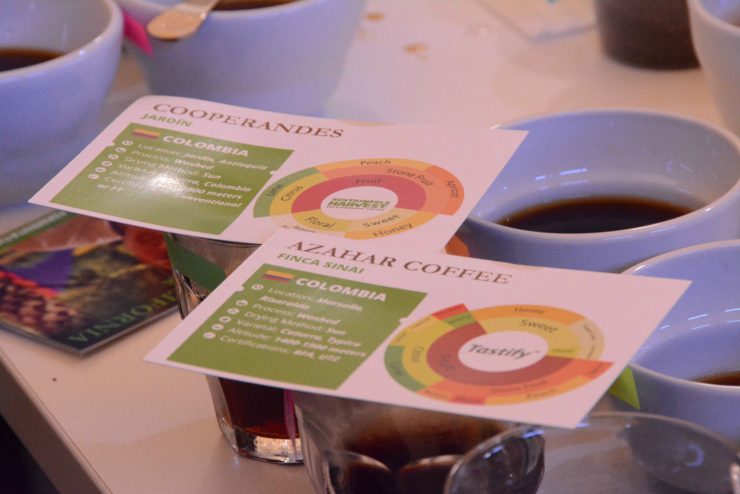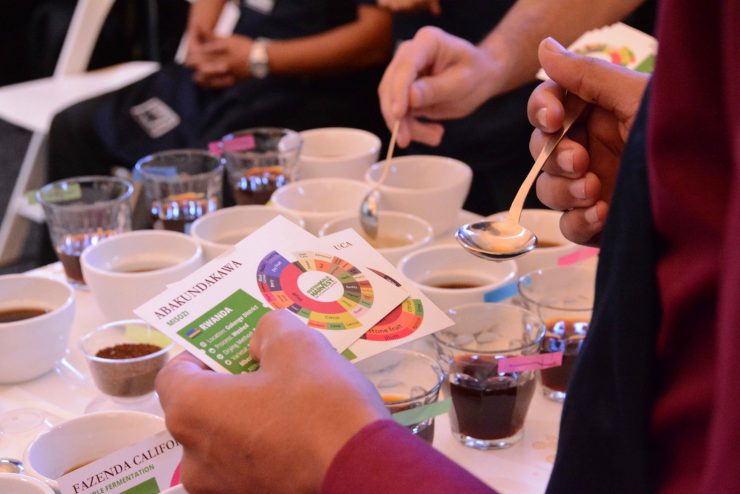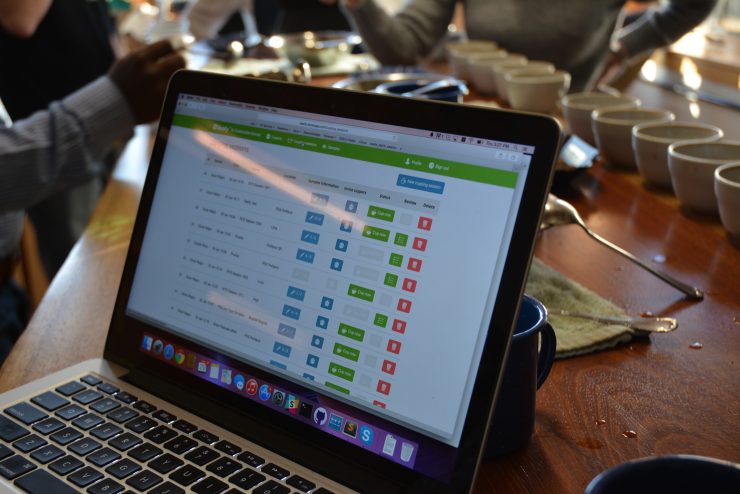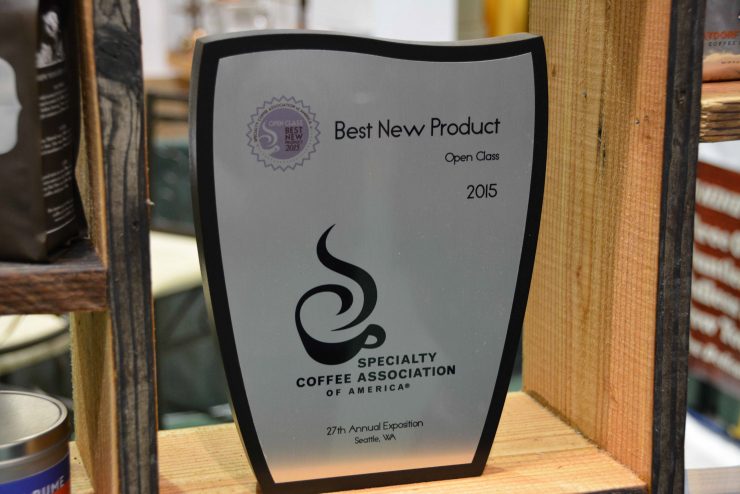Communicating one’s felt experience to the outside world is a daunting task for any human. At any given point, miscommunication due to a variety of factors can impair our ability to relate to each other. Call me a technofuturist if you like, but I think one benefit of technology is its ability to ease the sometimes incredibly difficult task of communication. To wit: Tastify, winner of SCAA’s Best New Product (Open Class category), is a new cloud-based app developed by our partners at Sustainable Harvest that specifically addresses communication between people in the coffee industry, from producers to exporters, importers, cuppers, green buyers, and even just plain old coffee lovers.
 Tastify allows a user to document the taste experience of a coffee in real time, for easy reference in the future. A Tastify user effectively notates a wide variety of different descriptors as they move through the cupping experience, and can add new descriptors along the way.
Tastify allows a user to document the taste experience of a coffee in real time, for easy reference in the future. A Tastify user effectively notates a wide variety of different descriptors as they move through the cupping experience, and can add new descriptors along the way.
I am not surprised this program won an award at SCAA; what takes one in immediately upon engaging with Tastify is the app’s ease of use, working in tandem with the pleasing multi-colored visuals that accompany the experience. For visually-oriented people (like myself, admittedly), this is a welcome advancement from text- and paper-based cupping documentation.
As the user cups through different coffees, Tastify records each coffee in its database, and these data points can be brought up and referred to in a number of different manners. As I spoke with Oscar Canseco Magro, Sustainable Harvest’s Chief Technology Officer and the main driving force behind Tastify, the possible implementations for the app seemed endless.
For example, as Magro told me, roasters and green buyers looking for a particular flavor profile can search their database by creating a custom set of flavor characteristics, and coffees that fit the profile they create will populate the screen. This means no more looking through years of backlogged paper cupping forms for that particular coffee from years in the past—you remember the one—that may (or may not) have fit the profile you’re looking for.
Importers can potentially use Tastify to search through their database to let buyers know the typical range of cupping scores for a given cultivar. With a sufficient set of data points, an importer could use this data as a powerful tool to communicate trends in quality and productivity to their partners at all chains in the industry, from farmers to roaster clients. Organizations involved in research and development in producing countries could benefit from ease of access to data collected throughout the world by cuppers.
Exporters can export their data to a producer’s account to show them how their coffees relate to those of other producers locally or internationally. Comparison charts with up to six coffees can be generated instantaneously to provide graphical reference. In this way, exporters could allow producers to understand more fully how certain qualities of coffee fit the demands of the coffee market.
There are still more applications. For example, two cuppers can cup the same coffee simultaneously in different parts of the world, and communicate in real time; the app can even simultaneously translate tasting notes between English, Spanish, and Portuguese. Aside from multilingual support, the aforementioned visual aids provided by Tastify take ease of access even further. Word clouds, flavor wheels, and spider charts can all be developed to illustrate the flavor experience. Tastify offers an extremely wide variety of flavor descriptors to choose from in different categories, with secondary flavors to boot. Aromatics are included, and you can add descriptors to enrich the experience for future sessions.
Information sharing is one of the most fascinating parts about Tastify. Now realistically, not all coffee companies will want to share their cupping scores and impressions—I get that—but one can imagine the ramifications of a completely open-source coffee database replete with years of information. This kind of technology is one more step towards moving the industry away from the “dark arts and magic” phase of specialty coffee’s march towards progress. The possibilities for information sharing are incredibly intriguing, though as Uncle Ben from Spider-Man taught us, with great power comes great responsibility.
There’s also, it should be said, a perhaps less immediate possible use for Tastify, and that’s in the hands of the world’s growing legion of specialty coffee consumers. The cafe regulars who are the backbone of the specialty coffee industry around the world know a thing or two about flavor themselves, and it doesn’t matter if you’re a coffee professional or total layman: seeing the flavors you experience in a cup of coffee spun out into a set of colorful, glossy visuals is just universally cool.
To create this software, Sustainable Harvest drew on years of cupping data—more than 2,000 cupping sessions with 32,000 cupping scores. That’s a lot of coffee, and a lot of information. All of these coffee experiences led to a way for people to share even more experiences with one another, and as more users get access to the app, I hope more information will be logged and shared publicly. Tastify is technology developed to facilitate communication; bilingual, linked in, and globally relevant. After all, the more we communicate, the more we understand.
Evan Gilman is an American coffee professional and Sprudge reporter focused on origin, producers, and importers. Read more Evan Gilman on Sprudge.
The post Tastify: A Coffee Cupping App Looks To The Future Of Flavor appeared first on Sprudge.


